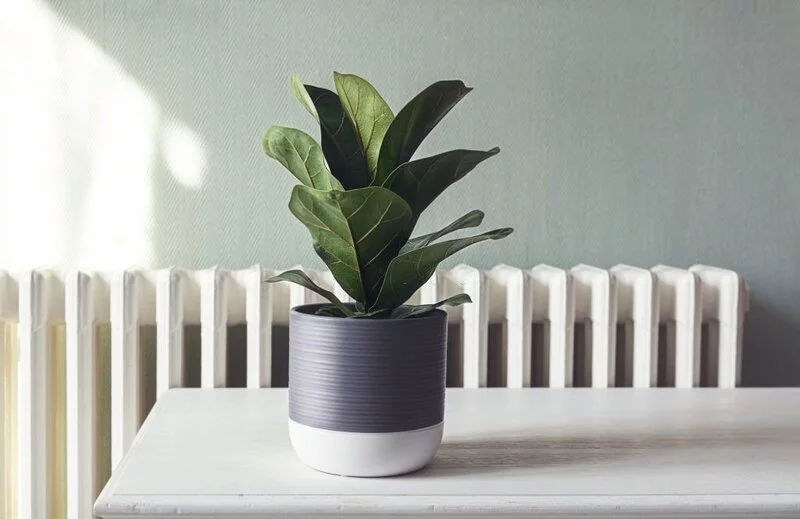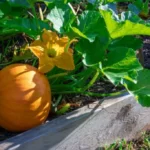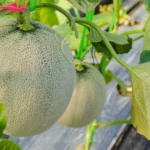Welcome to the world of the Fiddle Leaf Fig, one of nature’s most flamboyant foliage plants! These beauties, with their large, shiny leaves that resemble a violin, are a delightful addition to any living space. But just like any other plant, they require care to keep them at their best. One of the critical aspects of their care is trimming. Trimming isn’t just about maintaining its aesthetics; it’s about improving the plant’s health, encouraging new growth, and keeping your fiddle leaf fig happy. So, strap in, plant parents, because we’re going to dive into the simple art of trimming a fiddle leaf fig.
- GARDENING ESSENTIAL: Steel blade plant snips ideal for a variety of pruning tasks like cutting flower stems, shaping and maintaining your herb garden, and more to encourage overall plant health and appearance
- MAXIMUM POWER AND PRECISION: Non-stick blade coating makes smooth cuts, reduces gumming, and enhances rust resistance; Easy-Action design helps reduce hand fatigue; SoftGrip handle and easy-open lock allows for more control of clippers
- LONG-LASTING AND RELIABLE: Steel blades stay sharp through heavy use and provide excellent durability for lasting value; Fiskars pruning snips and tools are built to last
- QUALITY GARDEN TOOLS: Designed to help you cultivate a better garden, Fiskars garden and yard tools are equipped with smart technologies and award-winning, ergonomic features that make it easier and more enjoyable to transform your outdoor space
- INCLUDES: 2 pairs of Fiskars Micro-Tip Pruning Snips with blade covers; Full lifetime warranty
When to Trim
Before we begin, let’s answer one crucial question: “When should I trim my fiddle leaf fig?” Trimming isn’t a task that should be performed too frequently as it could stress the plant. The best time to trim your plant is when it shows signs of outgrown or damaged leaves, if it’s becoming too tall for your space, or when you notice an odd, unruly growth pattern. The start of the growing season – usually early spring – is also a perfect time for a trim. Spotting these signs and understanding your plant’s needs is the first step to maintaining a healthy fiddle leaf fig.
Tools Required for Trimming
Armed with the knowledge of when to trim, it’s time to gather your tools. Trimming a fiddle leaf fig doesn’t require an array of complicated gardening tools. At a bare minimum, you need a sharp pair of pruning shears or a clean, sharp knife. Sharp tools are vital as they make clean cuts that heal quicker and are less likely to cause damage to the plant. In addition to these, you might want to keep a clean damp cloth for wiping any sap that may seep out during the trimming process. If your plant is large, a stable ladder or step stool can ensure you safely reach the upper leaves. And remember, after each use, clean your tools to keep them in prime condition for the next trim. That’s it! You’re now prepared for your trimming mission. Let’s move forward with the actual process.
Preparation Before Trimming
Now that we’re armed with the necessary tools, let’s set the stage for our trimming journey. Choose a space with ample room to move around, preferably a spot with good lighting so you can clearly see your plant. Lay down a sheet or newspaper to catch the falling leaves and keep your area tidy. Remember, safety is paramount. So, put on your gardening gloves to protect your hands from the plant’s sap which can be irritating to the skin. Finally, take a good look at your fiddle leaf fig. Identify the parts that need trimming – this could be damaged leaves or areas where the plant has become too dense. Once you have a clear plan of action, it’s time to dive in.
Step-by-Step Guide to Trimming Your Fiddle Leaf Fig
- How to Identify which Parts to Trim: Look for leaves that are brown, yellow, or have spots. These are clear signs of damage and should be your first targets. Also, consider any overgrown sections that might be throwing the shape of your plant out of balance.
- The Proper Trimming Technique: Hold your pruning shears or knife at a 45-degree angle about an inch away from the main trunk or next leaf up, and make a clean cut. Remember, don’t pull or tear the leaves, as it can cause more harm than good.
- How to Trim Overgrown Plants: If your fiddle leaf fig has become a towering giant, start from the top and work your way down, taking care not to remove more than 10-15% of the total leaf volume at one time.
- Ensuring you don’t Over-trim: Be conservative in your trimming. It’s better to make a few small cuts and reassess than to cut too much at once. Remember, you can always trim more, but you can’t put a leaf back once it’s been cut!
Post Trimming Care
And there you have it! You’ve successfully given your fiddle leaf fig a trim. But the care doesn’t stop there. After trimming, give your plant a good drink of water and place it in a well-lit, warm area where it’s comfortable. Avoid moving the plant too much, as it needs to recover. Keep an eye on the cut areas for any signs of disease or distress, and make sure the plant continues to get the right amount of light and water in the following weeks. Trimming can be a bit of a shock to your plant, so extra TLC is necessary to help it bounce back healthier and happier. You did great! Give yourself a pat on the back for successfully trimming your fiddle leaf fig.
- Every requirement of fiddle leaf fig plants were taken into consideration during the forumlation of this fertilizer, which will enhance the healthy growth of your plant
- Provides all the nitrogen, phosphate, potassium, and micronutrients your fiddle leaf plant plants need to maintain healthy deep green leaves
- Simply dilute the high concentrate plant fertilizer into a water solution. This 8oz bottle makes 12 gallons of watering solution
- Includes the highest quality ingredients from our 5th generation family farm ensures the absolute highest quality fiddle leaf plant food for your beloved indoor potted plants
- SPECIALLY FORMULATED FOR FICUS: Can be used to feed: Ficus Lyrata, Ficus Audrey, Ficus Religiosa, Ficus Elastica, Ficus Benjamina (Weeping Fig), Alli, Olympian or Kadota Fig Tree, and Benghalensis
Common Mistakes to Avoid While Trimming
Even the most seasoned plant parents can make mistakes while trimming, so let’s look at a few common pitfalls to avoid:
- Over-trimming: Less is more when it comes to trimming. Remember, you can always cut more if needed, but you can’t reattach a leaf once it’s been cut.
- Using blunt tools: Blunt tools can tear the plant tissue, leading to a slower healing process and potential infections. Always use sharp, clean tools for a quick, clean cut.
- Trimming at the wrong time: The best time to trim is during the growing season – typically early spring. Avoid trimming in the dormant season (winter), as the plant will not heal as quickly.
- Not cleaning up: Always clean your tools before and after trimming, and remember to clear away any fallen leaves or debris to prevent the spread of any potential diseases.
Frequently Asked Questions
Can I trim my fiddle leaf fig any time of the year?
Ideally, you should trim your plant during its growing season, typically early spring.
How much should I trim?
As a rule, don’t remove more than 10-15% of the total leaf volume at one time.
What should I do with the cut-off leaves?
If they’re healthy, you can propagate them to grow new plants!
My plant looks shocked after trimming, is it normal?
Yes, plants often need time to adjust after a trim. Give it proper care, and it should bounce back.
Conclusion
Well, there you have it, the A-Z of trimming a fiddle leaf fig! It may seem a bit daunting at first, but remember, every snip and trim you make is for the benefit of your leafy friend. Trimming not only helps maintain the shape of your plant but also encourages healthier and more controlled growth. So, armed with your shears and this guide, you’re now ready to tackle the task head-on. Your fiddle leaf fig will thank you for it!







